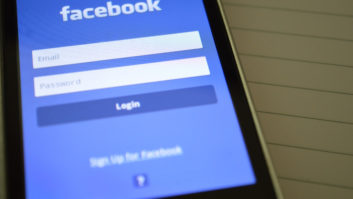The author is membership program director of the National Federation of Community Broadcasters. NFCB commentaries are featured regularly at www.radioworld.com.
During my time as a program director, there were few puzzles as challenging as audience giving and community radio. What vision and values does a station convey organically that excites a listener enough to donate? Independence and even contrarianism can shore up gifts from the most ardent, but what is the secret to long-term support from the greatest number of people and especially the casual listener? For volunteer-dependent and sometimes self-referential community media organizations, the most correct answers were at points elusive.
A new study conducted by Carl Bloom Associates may present information that could help your community radio station.
The consulting firm just issued its 2019 Public Media Member Motivation Survey. With nearly 16,000 responses from noncommercial radio donors, it is one of the most comprehensive looks today of public media giving. And, while the numbers may not apply in terms of scale, the truth is that people who like noncommercial radio are not all that different. The casual listener and donor may know a particular brand or station by its sound, but the things they appreciate in our medium as a whole — the spirit of inquiry and cultural curiosity, for example — are nearly universal.
[Read: Community Broadcaster: Does Youth Radio Matter?]
What researchers discovered may help your station fine tune its approach to fundraising.
According to the study, and consistent with the National Federation of Community Broadcasters’ Circle of Engagement model, good programming drives engagement and revenue. Sixty-four percent of those polled say ensuring quality program production and supporting the acquisition of new programs are their biggest motivations to pledge as well as to increase their gifts. However, 61% of respondents said they contribute because they feel obligated to pay for what they consume. “A quid-pro-quo mentality more evident among older members compared to the more community-oriented and altruistic attitudes observed among younger members,” notes the survey.

In addition, the presence of a mix of national and local programs tended to drive contributions (55%) rather than the nationally syndicated programs stations aired (though cited by 40% as key) or by local programs (named by only 5% as the main reason for donations). Of course, different stations have different schedules, but this data may help you understand audiences as you craft your message.
For a lot of community radio loyalists, giving out the phone number to the pledge line during on-air fundraising is a time-honored tradition. Thus, you might be shocked to know people are not recalling phone calls as a way to give like they once may have. It’s a method whose awareness, in fact, has been on the decline since 2016. Now, 49% of people recall web giving, likely as a consequence of so many nonprofits pushing for online donation via Giving Tuesday and other affairs; and 30% remember mail. Phone calls are remembered as a way to give by only 32% of respondents.
Such findings may prompt your station to look at how your asks define your online donation presence. Even if web giving is not as big for you now, the winds are shifting online in a huge way. When it comes to preferred methods for giving, online (46%) obliterates everything, including mail (22%) and phone (18%) and social media giving, like the Facebook donate feature (2%).
Also, counter to what many community radio stations have always assumed, more people say giving smaller monthly amounts is preferable to making a larger annual contribution. In general, older audiences prefer annual renewal by mail or phone, while millennials and Generation X like to autopay monthly. Those surveyed said the smaller monthly gifts felt easier to manage. Donors also believed their support, spread monthly, was more consistent and present. Your station may want to consider speaking to monthly gifts more, using such logic.
And lastly, why people stop giving may help shatter assumptions. The number of folks who stop giving because they no longer like the programming (8%) or pledge drives (4%) are outpaced by financial issues (18%). That financial number is up from 2016 (14%), but the pledge drive annoyance is down from the 2016 peak of 12%. Perhaps indicative of our polarized times, programming dissatisfaction for withheld contributions has spiked since 2016, when that figure sat at 4%.
The internet has helped nonprofits globally reimagine fundraising, so it should come as no surprise how it has altered your audience’s habits when it comes to charitable giving. May those insights, and many more, help make your community radio station’s 2019 its most successful year yet.
[Subscribe to our newsletter and get it delivered right to your inbox.]












